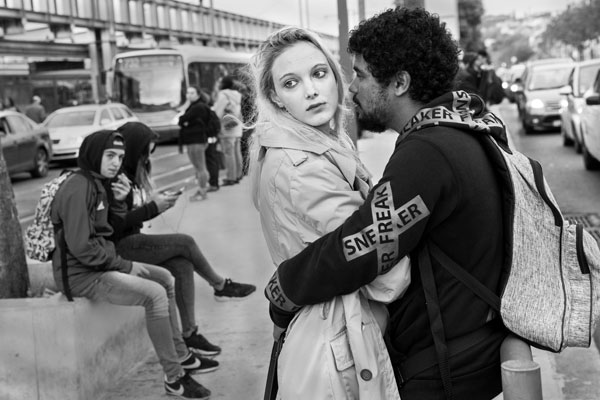The Ultimate Guide To Framing Streets
Wiki Article
6 Easy Facts About Framing Streets Explained
Table of ContentsThe Facts About Framing Streets UncoveredTop Guidelines Of Framing StreetsExcitement About Framing StreetsFraming Streets Things To Know Before You Get ThisSome Known Details About Framing Streets Everything about Framing Streets
, usually with the purpose of capturing photos at a decisive or poignant moment by mindful framing and timing. https://framing-streets.webflow.io/.
The 5-Second Trick For Framing Streets
Susan Sontag, 1977 Road photography can concentrate on people and their habits in public. In this respect, the road professional photographer is similar to social documentary digital photographers or photojournalists who also work in public locations, however with the purpose of catching relevant events. Any one of these photographers' pictures may capture people and home visible within or from public places, which typically involves navigating moral concerns and regulations of privacy, security, and property.Depictions of daily public life develop a style in practically every duration of globe art, beginning in the pre-historic, Sumerian, Egyptian and early Buddhist art durations. Art dealing with the life of the road, whether within views of cityscapes, or as the dominant motif, appears in the West in the canon of the Northern Renaissance, Baroque, Rococo, of Romanticism, Realistic look, Impressionism and Post-Impressionism.
Getting My Framing Streets To Work
Louis Daguerre: "Blvd du Temple" (1838 or 1839) In 1838 or 1839 the initial photograph of figures in the street was recorded by Louis-Jacques-Mand Daguerre in among a pair of daguerreotype sights drawn from his workshop window of the Blvd du Holy place in Paris. The 2nd, made at the height of the day, shows an unpopulated stretch of street, while the other was taken at concerning 8:00 am, and as Beaumont Newhall reports, "The Blvd, so constantly full of a moving crowd of pedestrians and carriages was flawlessly solitary, except an individual who was having his boots combed.His boots and legs were well defined, but he is without body or head, because these were in motion." Charles Ngre, waterseller Charles Ngre. https://codepen.io/framingstreets1/pen/NWJrZWo was the initial photographer to attain the technical elegance needed to sign up people in movement on the street in Paris in 1851. Photographer John Thomson, a Scotsman working with reporter and social protestor Adolphe Smith, published Street Life in London in twelve month-to-month installments starting in February 1877
The Of Framing Streets
Eugene Atget is related to as a progenitor, not due to the fact that he was the first of his kind, however as an outcome of the popularisation in the late 1920s of his document of Parisian roads by Berenice Abbott, who was inspired to take on a similar documents of New York City. [] As the city developed, Atget aided to promote Parisian streets as a worthy wikipedia reference subject for digital photography.
An Unbiased View of Framing Streets
Martin is the first taped professional photographer to do so in London with a masked cam. Mass-Observation was a social research organisation established in 1937 which intended to record daily life in Britain and to videotape the reactions of the 'man-in-the-street' to King Edward VIII's abdication in 1936 to wed separation Wallis Simpson, and the succession of George VI. Andre Kertesz.'s extensively appreciated Images la Sauvette (1952) (the English-language version was labelled The Definitive Minute) promoted the idea of taking a photo at what he described the "definitive minute"; "when kind and material, vision and structure merged into a transcendent whole" - photography presets.Not known Facts About Framing Streets
The recording machine was 'a surprise cam', a 35 mm Contax concealed under his coat, that was 'strapped to the chest and attached to a long cord strung down the ideal sleeve'. His job had little contemporary effect as due to Evans' sensitivities regarding the originality of his job and the personal privacy of his subjects, it was not released till 1966, in the book Several Are Called, with an introduction created by James Agee in 1940.Helen Levitt, then an educator of kids, connected with Evans in 193839. She documented the temporal chalk illustrations - vivian maier that belonged to kids's road society in New York at the time, in addition to the youngsters who made them. In July 1939, Mo, MA's new photography section consisted of Levitt's job in its inaugural exhibitionRobert Frank's 1958 book,, was substantial; raw and typically indistinct, Frank's photos examined conventional photography of the time, "challenged all the official regulations set by Henri Cartier-Bresson and Pedestrian Evans" and "contradicted the wholesome pictorialism and heartfelt photojournalism of American magazines like LIFE and Time".
Report this wiki page